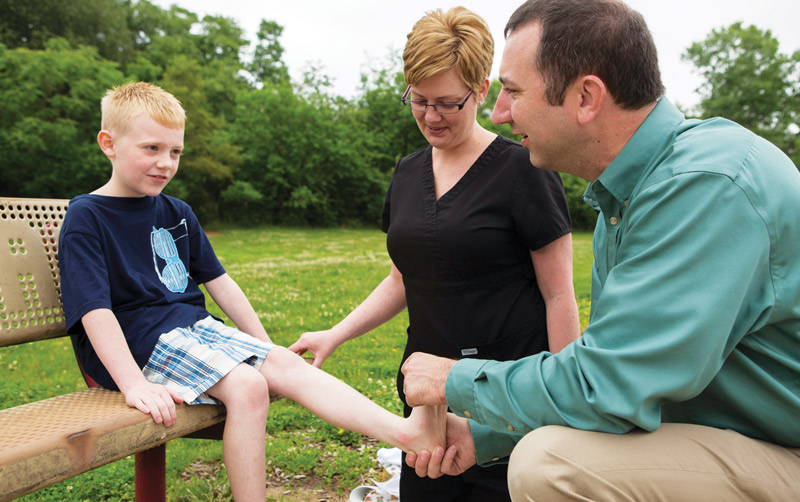In a breakthrough study conducted by a research group at Nagoya University, the rapid regeneration of tendons in newts has been unraveled. The research, recently published in the Journal of Orthopaedic Research, compared the regeneration process of injured tendons in newts with that of mice. The findings of this study have the potential to revolutionize the treatment of tendon injuries in human athletes in the future.
Tendon injuries pose a significant challenge for athletes, often requiring months of therapy and rehabilitation before they can resume competing. However, certain animals like newts have the remarkable ability to regenerate severed tendons in as little as 12 weeks, without the formation of scar tissue.
To investigate the underlying mechanisms of this phenomenon, the research group, led by Associate Professor Eijiro Maeda and Professor Takeo Matsumoto, chose newts as a model for tendon regeneration. The Iberian newt was selected due to its similar size to mice, allowing for easier comparison of injury healing between the two species.
While mammals, including humans and mice, exhibit limited regenerative capacities for tissue and organ healing, newts possess an extraordinary ability to regenerate various types of tissues and organs without scar tissue formation. Exploring the insights gained from newt studies may provide valuable knowledge on tissue regeneration for mammals, potentially even extending to organ regeneration.
In their experiment, the researchers examined injured flexor tendons in the middle toe of the hind foot, a common body part for both newts and mice. Six weeks after the injury, the newts had developed tissue that resembled healthy tendons. By the 12-week mark, the regenerated tissue had achieved comparable strength to that of a healthy tendon and was completely free of scar tissue. In contrast, the healing tissue in mice differed significantly from healthy tendon tissue, and even at 12 weeks, its strength remained below that of a healthy tendon.
The findings from the study revealed that in newts, tendon-like collagenous tissue grew between the severed tendon stumps, providing a bridge for regeneration. This was distinct from the disorganized scar-like tissue that formed in the injured area of the mice.
The researchers also observed a higher concentration of cell nuclei around the junction of the newly formed and residual tendon in newts. As the number of cells is closely associated with cell growth, monitoring these cells could be instrumental in understanding the mechanism behind newt tendon regeneration.
Although previous studies have explored tissue regeneration in newts and other amphibians, most of them focused on large-scale regeneration involving missing fingers, limbs, and hearts. By focusing on the smaller-scale regeneration of damaged tissue, which is also relevant to humans, this study not only highlighted the differences in healing and regenerative capabilities between newts and mammals but also identified variations in the mechanisms of healing and regeneration.
The research team led by Maeda hopes that their findings will provide insights into the mechanisms that lead to full functional recovery in human tendon injuries. This knowledge could potentially benefit athletes and individuals suffering from tendon injuries, enabling them to recover more rapidly and return to their previous level of activity.
Maeda emphasizes that the key to newt tendon regeneration lies in the early stages after injury. Newts initially form a small and weak tendon, which gradually remodels over time, gaining strength and stiffness. By mimicking this straightforward regeneration strategy, it may be possible to assist human athletes in healing more effectively, thereby avoiding invasive surgery.
In conclusion, this groundbreaking study sheds light on the rapid tendon regeneration observed in newts. By understanding the mechanisms behind this phenomenon, the research has the potential to revolutionize tendon injury treatments in human athletes, leading to faster recovery times and the ability to return to peak performance.
*Note:
1. Source: Coherent Market Insights, Public sources, Desk research
2. We have leveraged AI tools to mine information and compile it




